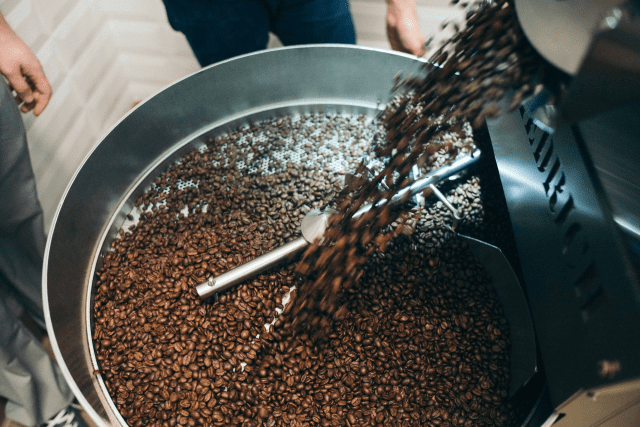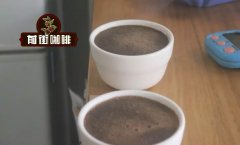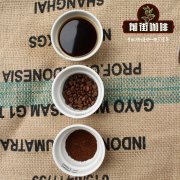Whose pot is the defective smell? How to correctly identify the flavor damage caused by improper baking!
Professional coffee knowledge exchange more coffee bean information please follow the coffee workshop (Wechat official account cafe_style)
When drinking coffee with defective flavor, if we can correctly identify the flavor damage caused by improper baking, we can effectively distinguish the source of defective flavor and accurately judge whether it is the cause of "raw bean quality", "baking level" or "brewing parameters". Only in this way can we aim at the problem without throwing the pot or taking the blame.

The composition of raw beans will change with the baking process. No matter how high-quality raw beans are, they cannot brew delicious coffee without proper baking, but "baking defects" are not as straightforward and clear as "raw bean defects". In most cases, they can only be distinguished by naked eye observation and smell. It is impossible to tell whether there are "baking defects" at all, and they can only be found by cup testing. Therefore, you need to pay more attention to baking:
If ① does not have enough baking time, that is, what we often call "incomplete development" (Underdevelopment), it will produce the smell of vegetables, grass, or even serious fishy smell, lack of caramel aroma. When the bean baker wants to do shallow baking, sometimes the development is not complete.
If ② is roasted at low temperature and for a long time, that is, if the baking time before explosion is too long, baked coffee will be produced and the aroma of coffee will be lost; this defect is not visible to the naked eye and can only be identified by tasting. Usually, baked coffee is accompanied by a flat flavor and no sweetness, which is described as bread or paper.
When the baking time after the explosion of ③ is too long, the beans are easy to produce burning smell. These coffee beans look black, oily and sometimes even scorched. The cup test will have a charred, bitter taste, with a smoky and peat flavor.
If ④ is baked at high temperature and for a short time, or when the temperature in the furnace is too high and the speed is too slow, scorching will occur-the surface of the bean is charred, and dark, charred patches appear on the flat part of the surface of the coffee bean-actually the whole bean is scorched. These coffee beans taste distinctly cereal, oily, smoky, and even like burnt meat.
In addition, if the surface of raw beans is overheated, it is easy to produce charred smell.
Fresh coffee beans are rich in aromatic compounds, but with the increase of storage time, these compounds will be released along with carbon dioxide, and the volatile organic compounds in beans will decrease day by day.
The aroma of coffee is the key to distinguish roasting. When coffee is not properly roasted, the aromatic compounds in beans (the source of aroma when brewing coffee) will gradually disappear. If the coffee powder does not appear when grinding beans, such as sweetness, flowers and other aroma, it means that the roasting condition of the coffee is not good.
In addition, if the coffee fiber contains too much moisture and oxygen, the aroma will disappear with the reduction of organic matter, coffee will also be due to excessive oxidation or moisture, resulting in a peculiar smell that is difficult to enter the nose. The oxygen and moisture in coffee beans even react with the fat in the beans, making them smell rotten. Coffee beans will produce an unpleasant smell over time, if brewed into coffee, the smell will be more obvious. Therefore, coffee beans must be properly preserved in order to make delicious coffee.
When roasting coffee beans, it is necessary to strictly control the temperature, time, throttle and fire.
How to choose high quality beans?
High-quality raw beans with the correct roasting method can make the coffee produce a beautiful aroma. Next, we will introduce you to the choice of quality coffee.
Baking
Choose the baking degree you like.
The aroma of coffee will change with the degree of roasting. In recent years, the degree of roasting will also be marked on the packaging of coffee beans, so when buying coffee beans, you can choose the roasting degree you like.
Identification
Learn the basic information about coffee beans first.
If the packaging of coffee beans clearly marked its production year, origin, manor name, and variety and other information, it is a better quality coffee. If you buy comprehensive beans, you must also choose those with clearer marks.
Aroma
A mellow, clean aroma
High-quality coffee will have floral aroma and unique aroma, but also will skillfully integrate rich sour and chocolate-like taste, and will not give off an unpleasant smell. Because the coffee beans are not mixed with defective beans, even if they are placed for a long time, the aroma of the extracted coffee will not change and the coffee will not be cloudy.
Coffee beans and powder
Confirm the baking date
Although you can buy coffee powder directly, it is better to buy fresh coffee beans and grind them into powder by yourself. However, whether you buy coffee beans or powder, you must confirm the roasting date of the coffee. If you buy fresh coffee beans that have just been baked, please seal the beans and store them in a cool, dry, dark place.
Reference: introduction to Coffee textbook by Junying Horikou
END
Important Notice :
前街咖啡 FrontStreet Coffee has moved to new addredd:
FrontStreet Coffee Address: 315,Donghua East Road,GuangZhou
Tel:020 38364473
- Prev

What are the advantages and disadvantages of capsule coffee? How to choose a capsule coffee machine?
Professional coffee knowledge exchange more coffee bean information please pay attention to the coffee workshop (Wechat official account cafe_style) capsule coffee has been popular all over the world for many years, in terms of market share, it is still owned by Nestle! Nestle's brand Nespresso, which sells coffee machines and capsule coffee, sold more than 27 billion around the world as early as 2012
- Next

Coffee steaming Coffee Why do steaming Coffee affect Coffee Flavor
Professional coffee knowledge exchange more coffee bean information Please pay attention to the coffee workshop (Wechat official account cafe_style) "steaming" is the rapid release of carbon dioxide after coffee powder comes into contact with water, which is called bloom in English. With flowering, it only happens when making fresh coffee. It is also a great pleasure to observe the expansion of powder. The length of steaming time depends on
Related
- Beginners will see the "Coffee pull flower" guide!
- What is the difference between ice blog purified milk and ordinary milk coffee?
- Why is the Philippines the largest producer of crops in Liberia?
- For coffee extraction, should the fine powder be retained?
- How does extracted espresso fill pressed powder? How much strength does it take to press the powder?
- How to make jasmine cold extract coffee? Is the jasmine + latte good?
- Will this little toy really make the coffee taste better? How does Lily Drip affect coffee extraction?
- Will the action of slapping the filter cup also affect coffee extraction?
- What's the difference between powder-to-water ratio and powder-to-liquid ratio?
- What is the Ethiopian local species? What does it have to do with Heirloom native species?

